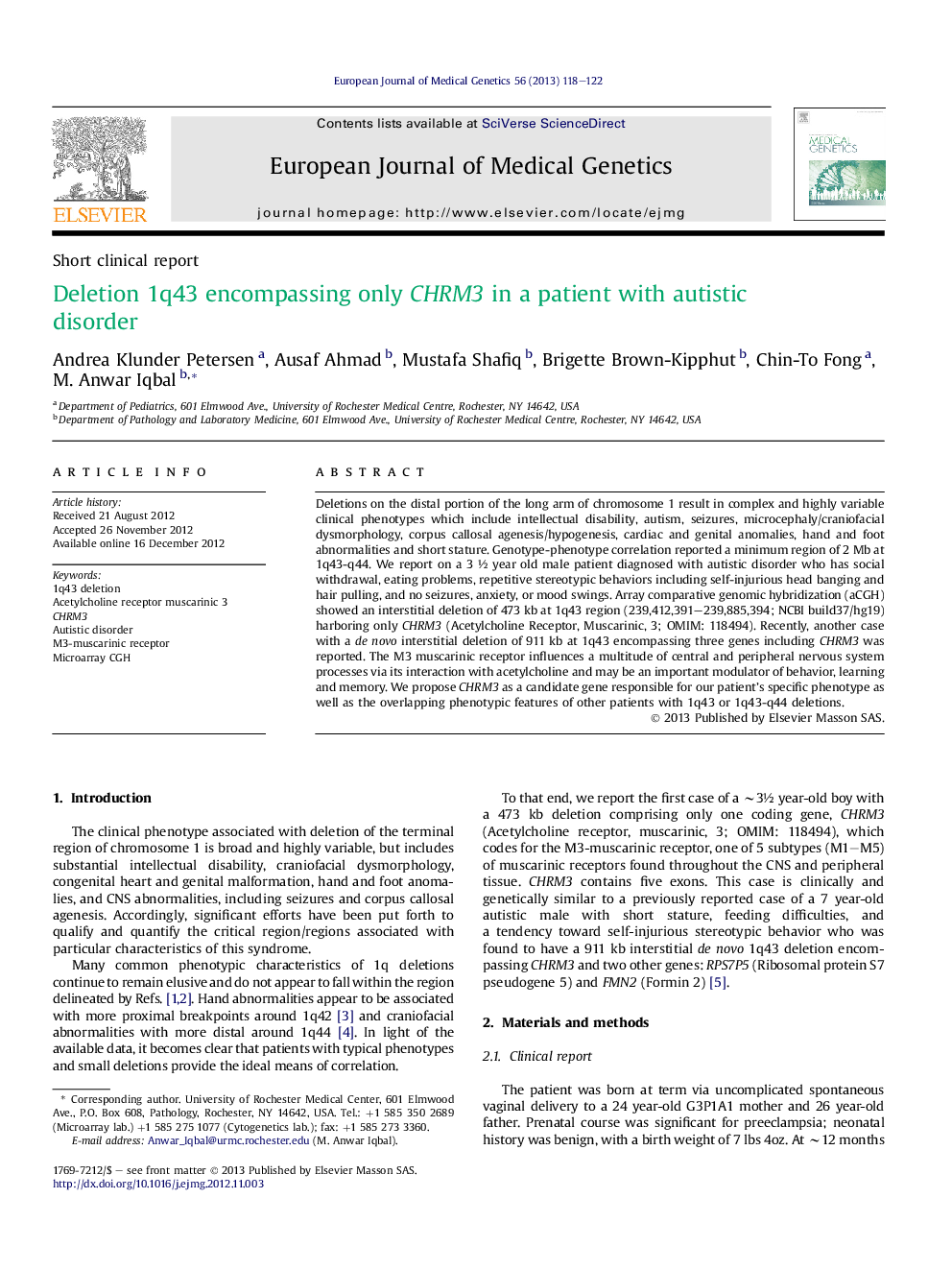| Article ID | Journal | Published Year | Pages | File Type |
|---|---|---|---|---|
| 2814092 | European Journal of Medical Genetics | 2013 | 5 Pages |
Deletions on the distal portion of the long arm of chromosome 1 result in complex and highly variable clinical phenotypes which include intellectual disability, autism, seizures, microcephaly/craniofacial dysmorphology, corpus callosal agenesis/hypogenesis, cardiac and genital anomalies, hand and foot abnormalities and short stature. Genotype-phenotype correlation reported a minimum region of 2 Mb at 1q43-q44. We report on a 3 ½ year old male patient diagnosed with autistic disorder who has social withdrawal, eating problems, repetitive stereotypic behaviors including self-injurious head banging and hair pulling, and no seizures, anxiety, or mood swings. Array comparative genomic hybridization (aCGH) showed an interstitial deletion of 473 kb at 1q43 region (239,412,391–239,885,394; NCBI build37/hg19) harboring only CHRM3 (Acetylcholine Receptor, Muscarinic, 3; OMIM: 118494). Recently, another case with a de novo interstitial deletion of 911 kb at 1q43 encompassing three genes including CHRM3 was reported. The M3 muscarinic receptor influences a multitude of central and peripheral nervous system processes via its interaction with acetylcholine and may be an important modulator of behavior, learning and memory. We propose CHRM3 as a candidate gene responsible for our patient's specific phenotype as well as the overlapping phenotypic features of other patients with 1q43 or 1q43-q44 deletions.
► We found a deletion of 473 kb at 1q43 region in a patient with autistic disorder. ► This deletion region encompasses only CHRM3 gene. ► We proposed that deleted CHRM3 may be responsible for the phenotype of the patient.
